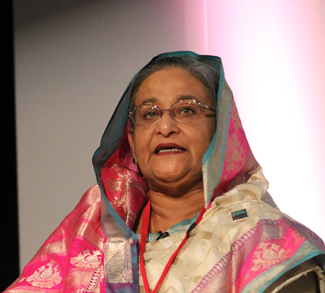Islamic State is touted as being the richest terrorist group in the world, with an estimated annual earnings of over a billion dollars. Like other terrorist groups, these earnings are derived from criminal activities – extortion, looting, and kidnap for ransom – as well as commercial activities like trading in oil, antiquities, and agricultural products. And if recent trends in their financial activity are any indication, Islamic State has revolutionized terrorism financing by merging technology and marketing to effectively draw donations from a large groups of people – a practice known as crowdfunding.
According to the Financial Action Task Force (FATF), Islamic State has started to rely on grassroots funding and has utilized efficient delivery mechanisms to obtain funds through the latest technologies. Islamic State has long been known to harness the power of technology, which has increased the reach and impact of its propaganda exponentially. This is the key element which has driven Islamic State’s crowdfunding model, which facilitates even a large group of ordinary citizens to contribute to the Islamic State’s coffers.
This crowdfunding activity is subsumed within the overall financial activity of the Islamic State, consisting of sourcing, distribution, and consumption mechanisms. Financial activity consists of two distinct sources of delivery and consumption channels. While a good majority of the funds are sourced, distributed, and expended inside territories controlled by Islamic State through extortion, taxation, oil trade etc., the rest is raised outside Islamic State-controlled territories. Almost all of these funds raised outside Islamic State-controlled territories are raised through a prolific variety of crowdfunding mechanisms. Within this crowdfunding channel, some portions of the revenue end up inside Islamic State-controlled territories, while others are used outside its domain to facilitate the travel of wannabe jihadis trying to join the Islamic State.
At the forefront of the Islamic State’s crowdfunding mechanism is its online and social media juggernaut. According to J.M.Berger and Jonathan Morgan from Brookings, who have carried out a census on the Twitter accounts of the Islamic State, the group including its overt supporters, were handling somewhere between 46,000 to 90,000 Twitter accounts since September 2014. Islamic State has been using this social media apparatus and online technology platforms, including online money transfers and prepaid cards, to solicit and transfer money into Syria. For instance, in January 2015, the Saudi government started investigations into individuals and entities seeking donations for the Islamic State using Twitter and Facebook. During the course of these investigations, it was ascertained that there were fundraisers from nine different nationalities who were operating a cluster of 29 foreign bank accounts, receiving donations from the Islamic State sympathizers around the world. These foreign bank accounts represent 20 beneficiaries who received individual donations from sympathizers around the world, which were then pooled together for further transfer. Saudi authorities blocked the fund transfers to all these accounts from Saudi Arabia.
Incidentally, Islamic State improvised a way to evade these counter measures by directing prospective donors to buy international prepaid cards or any other card which stores credit. The designated numbers of these prepaid cards were sent to the Islamic State fundraisers through Skype by the donors. These numbers were then sent to the Islamic State operatives near the Syrian border, who sold these numbers at a discount and used the proceeds to fund terrorist activity. In this manner, it is possible to transfer value from one financial jurisdiction to another without raising any suspicion.
On the other hand, a more crucial and dangerous crowdfunding variant is emerging outside the Islamic State-controlled territories, which should be a serious concern for the security planners. Recent trends indicate that crowdfunding revenue has also been deployed outside its territories to facilitate movement of recruits to Syria and Iraq. However, it is imperative to state that not all these funds are provided by the Islamic State to potential recruits. Some are provided by its sympathizers directly to fundraisers as well as to prospective recruits. For instance, interrogations of Indian nationals who were intercepted attempting to travel to Turkey have shed light on this latest phenomenon of crowdfunding in India. One 19-year-old radicalized youngster in India, who wanted to travel to Syria to join the Islamic State, received around Rs.3 lakhs (approx. USD 5,000) from different people who were strangers to him after he solicited donations online for his travel expenses. The response he received was so overwhelming that within a short span of time, he was in possession of more funds than he had ever had his entire life. He used these funds to fund his passport application and his travel expenses. These strangers who donated money were online acquaintances from a web page called Dawlat al-Islamiabil Iraq-ul-Sham (Islamic State in Iraq and Syria), who he met after joining the site sometime around the beginning of August, 2014. His appeal for funds paid dividends and by the third week of August, 2014, he had received money from the sympathizers.
In another instance, a businessman in India who was stopped from going to Syria claimed that he was motivated by an Australian of Syrian origin, Mohammad Ibn Al Barra, who was shuttling between Syria and Turkey supplying medicine to refugees. Al Barra incidentally had 5,000 followers in his Facebook page, the maximum permissible, and went on to start another Facebook page to further his activities. Barra used his Facebook to post real time updates from the war zone which even gave day-to-day operational details carried out by the Islamic State. The apprehended Indian further stated that money literally “flooded” the account of Barra’s bank account, when he had solicited donations for the Syrian cause. Again, the response to the call for donations was so overwhelming that Al Barra claimed he had enough money to buy out all of the pharmacies across the Turkish border.
Islamic State has used its large social media presence with huge followers to convert sympathy into funds in a practice that has not been adopted by any other terrorist group. Though, there is some conflation on the financial networks of the Islamic State when compared to other groups such as Al Qaeda, the Taliban etc., the most striking feature about the finances of the Islamic State is that it is seen harnessing the concept of crowdfunding, which has a distant precedence elsewhere. This is in a way similar to the diasporic funding concept mastered by the Liberation Tigers of Tamil Eelam (LTTE) but the only difference is that donors in the case of Islamic State are comprised of different nationalities as compared to the LTTE’s donors who are all Sri Lankan Tamils. This combination of highly motivated sympathizers, consisting of different nationalities with an above-average financial profile, has become the key financial strength of the Islamic State.
These high-volume, low-value transactions raised through crowdfunding are a real challenge to the counter terrorism finance regimes. To date, countermeasures to halt the financing of Islamic State have primarily focused on funds which are raised within Islamic State-controlled territories and against those funds which are raised outside and moved into Islamic State-controlled territories. On the other hand, crowdfunding of the Islamic State using technology platforms deployed outside these territories have not been object of focus. These funds which are pooled and deployed outside of Syria are highly difficult to identify and intercept. Some of the donors, who may not even be remotely connected to Islamic State, contribute under the impression that they are giving for a social and humanitarian cause. This is the glaring gap in the system. The fact that these funds are pooled at such short notice and the ease with which an individual can raise large amounts from multiple strangers magnifies the significance of crowdfunding when viewed from a security planner’s perspective. Given the ease and speed of raising funds outside the purview of existing countermeasures, crowdfunding could have disastrous consequences if some of these funds fall into the hands of self-radicalized individuals or lone wolfs who might only have a platonic relationship with Islamic State.




